Recovering from alcohol addiction is not easy, but it is possible. Acamprosate vs naltrexone for alcohol use disorder as a medication-assisted treatment (MAT) can be a game-changer.
Acamprosate vs naltrexone are fda-approved medications (Food and Drug Administration) for the treatment of AUD. Alongside counseling and support, medications like acamprosate vs naltrexone can reduce cravings and help prevent relapse.
But both medications differ in how they work, usage, and who they are best suited for. How do you know which one is right for you?
